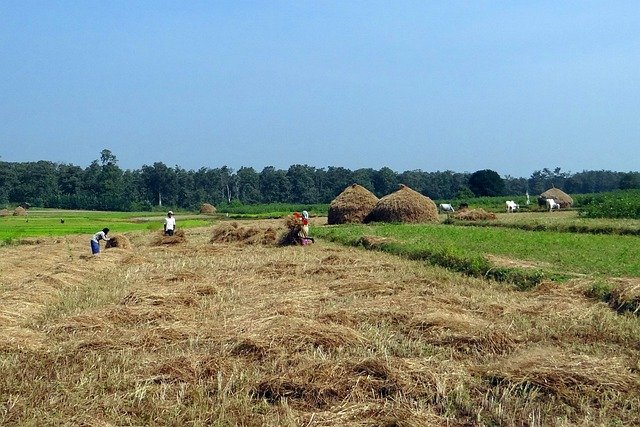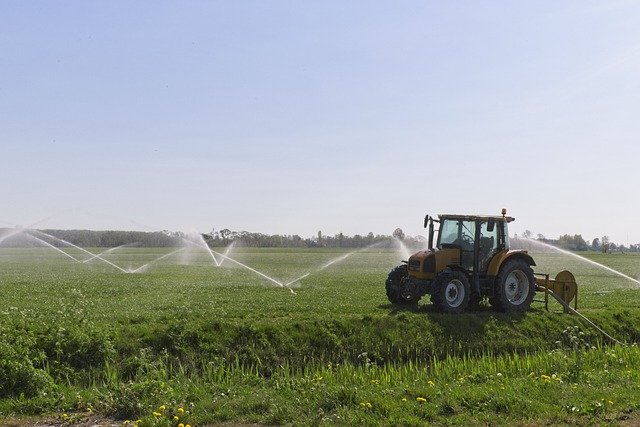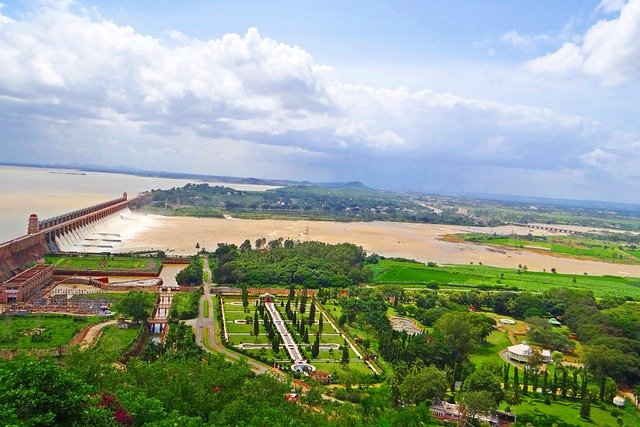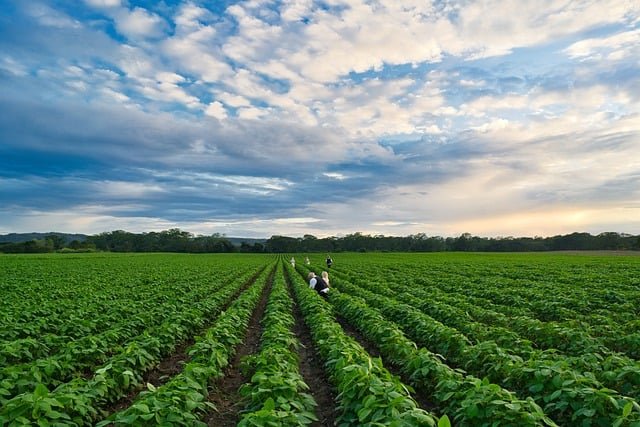SEC | S20W4: "ROLE OF AGRICULTURE IN THE ECONOMY
Hi friends,
I am Jyoti from India I would like to take part in the SEC S20 W4 CONTEST: https://www.steempro.com/hive-118902/@xkool24/sec-or-s20w4-role-of-agriculture-in-the-economy organised by Steem-Agro Team.
ROLE OF AGRICULTURE IN THE ECONOMY
Explain agriculture's social and industrial roles in your country, sighting one of the main grown crops.
Our Indian civilization has always been agricultural. Farmers have cultivated this fertile soil from the ancient Vedic civilization to present times, cherishing their relationship with Mother Nature. It's no surprise that India is known for its abundance and wisdom.

source
Agriculture in India is a century-old activity and is currently the largest contributor to the country's GDP. Over 50% of India's population are farmers.
Generally, agro-based industries are directly or indirectly related to agriculture. They include various industrial, manufacturing, and processing activities based on agricultural raw materials and activities and services that serve as inputs to agriculture.
Institutional arrangements for the promotion of agro-based industries in India
Various Government Departments and Agencies
- Ministry of Agriculture – deals with rice mills, oil mills, sugar mills, bakeries, cold storage.
- Board of Khadi and Village Industries: Covers traditional agro-based industries like "Gur", Handicrafts, Khandsari.
- Agri-Industrial Development Corporation- mainly provides agricultural machinery, inputs, and advisory services to farmers in each state. Some companies have also undertaken some manufacturing activities in the agribusiness sector.
- Small Business Development Agency- deals with small-scale agricultural industries like garments, food processing, beverages, food and fruit preservation, and agricultural implements.
How has this main-grown agriproduct helped in reducing poverty and as well promote rural development in your country?
India faced a severe food crisis in the 1960s due to rapid population growth, low agricultural production, frequent droughts, and dependence on food imports.
India wanted to achieve self-reliance and food security for its people and made arrangements to reduce poverty and malnutrition.
So India wanted to modernize its agriculture and make arrangements to make it more efficient, profitable, and competitive in the world market.
Green revolution
The Green Revolution was aimed at increasing the production and quality of food crops, especially wheat and rice in India, and introduced new technologies such as high-yielding seeds, fertilizers, pesticides, irrigation, and mechanization.

The Green Revolution led to a significant increase in agricultural production. New high-yielding crop varieties such as wheat and rice, which provide higher yields per hectare of land, help meet the global demand for food.
A sharp increase in food grain production during India's Green Revolution of the 1970s helped the country achieve self-sufficiency in food grains and stave off the threat of famine.
Thus, in 1978-1979, a huge increase in crop production led to a grain production of 131 million tonnes, making India one of the largest agricultural producers in the world.
India is a net exporter of food grains such as wheat, rice and rye, sorghum, sorghum, buckwheat, corn, barley, raagi, and their imports are negligible.
Poverty Alleviation: Higher agricultural productivity often translates into higher income for farmers. The Green Revolution helped lift many small-scale farmers out of poverty, increasing their crop yields and income levels.
What are the main challenges facing your country's top crops (e.g., cocoa, palm, maize, wheat, rice, etc.) in terms of economic impact?
India is a global agricultural powerhouse. It is the world's largest producer of milk, pulses, and spices, as well as the world's largest cattle herd such as cows, sheep, goats, and buffaloes, and agricultural land under wheat, rice, and cotton. It produces rice, wheat, cotton, sugarcane, farmed fish, mutton, fruits, vegetables, and tea.
Challenges
Three agricultural sector challenges will be critical to India's overall growth and the improved welfare of its rural poor:
Increasing productivity per unit of land should be the main engine of agricultural growth as almost all cultivated land is cultivated. Water resources are also limited and must contend with increasing industrial and urban demands for irrigation water.
The majority of India's poor are in rainfed areas or eastern Indo-Gangetic plains. Reaching such groups is not easy.
Agricultural intensification from the 1970s to the 1980s increased the demand for rural labor, which raised rural wages reduced food prices, and reduced rural poverty. However, agricultural growth declined in the 1990s and 2000s, and today IT and technical jobs have led to a shortage of manpower for agriculture. This slowdown of agricultural growth has become a major factor of concern.

The clean water in rivers and lakes is being polluted by the growing industries causing damage to the crops and hence the farmers are losing their livelihoods so they don't continue farming.
As real estate sector is more profitable than agriculture, it is unfortunate that the owners of agricultural land are converting it into real estate.
What current or past government initiatives are boosting agricultural productivity in your country?"
Indian agriculture, despite its current low-tech and subsistence nature, has the potential to generate economic growth and employment by addressing environmental, technological, and institutional challenges. There have been advances in irrigation, crop diversification, and institutional innovation to increase productivity and sustainability

source
Recent Government Initiatives:
- Pradhan Mantri Kisan Samman Nidhi (PM-KISAN)
- Pradhan Mantri Fazal Bhima Yojana (PMFBY)
- Soil Health Card Scheme
- Pradhan Mantri Krishi Singhai Yojana (PMKSY)
- e-National Agricultural Market (e-NAM)
- National Mission on Sustainable Agriculture
- Parambarakat Krishi Vikas Yojana (PKVY)
- Digital Farming Mission
- Unified Farmer Service Platform (UFSP)
- National E-Governance Program in Agriculture (NeGP-A)
What solutions can enhance agricultural productivity and growth in your country?
We should be focusing on creating synergies between agriculture and rural non-agriculture sectors, promoting group farming models, and developing related sectors such as fisheries and livestock. Institutional innovations such as encouraging smallholder cooperation through group farming have shown promising results, increasing productivity and empowering farmers, especially women. By adopting these changes, Indian agriculture can become technologically advanced, environmentally sustainable, economically viable, attract an educated youth, and drive the country's growth.
To make agriculture a key engine of growth, environmental, technological, and institutional challenges need to be overcome. These include regenerating water resources, expanding irrigation, embracing crop diversity, and adopting high-tech solutions such as micro-irrigation and climate-resilient farming practices.

Indian agriculture focuses more on staple crops like rice and wheat. This lack of diversification not only affects soil health but also limits farmers' income potential.
High-value crops such as fruits and vegetables can increase farmers' income. So they should also be cultivated and exported after self-sufficiency.
I would like to invite
@josepha,
@tammanna,
@uzma4882 to take part in this contest.
Discord : @jyoti-thelight#6650 Telegram :- https://telegram.org/dl


Upvoted. Thank You for sending some of your rewards to @null. It will make Steem stronger.
I heard India farms rice a lot. Indeed without agriculture most countries would have been passing through a lot. Agricultural sector is one of the areas the government shouldn't joke with.
Saludo estimada amiga gran publicación. Es notorio que tu país considera la agricultura como una poderosa herramienta para alcanzar el desarrollo a todo nivel de la nación y nada más cercano a la realidad , puesto que la seguridad alimentaria fuentes de empleo y otros factores de relevancia en el progreso están fundamentados en ella. Te deseo éxitos en tu estupenda entrada.
Hi @mariami, It's heartening to know that we share this perspective, as food security and job creation are very important for the country's development. Your support means a lot to me, and I wish you all the best as well!
Thank you so much for your kind words about my post.
Welcome to the agro-learning challenge season 20.
Observations and suggestions:
. Good explanation on social and industrial roles of the top grown crop in India. No doubt, India has been known for its giant strides in agricultural activities.
. Challenges and solutions provided could be ameliorated and solved by government intervention
.Generally, you've done great work, but ensure you always use the necessary tools and completely remove unwanted materials from your publications. . Thank you for your participation. We hope to see you in week 5.
Thank you @max-pro for the great support